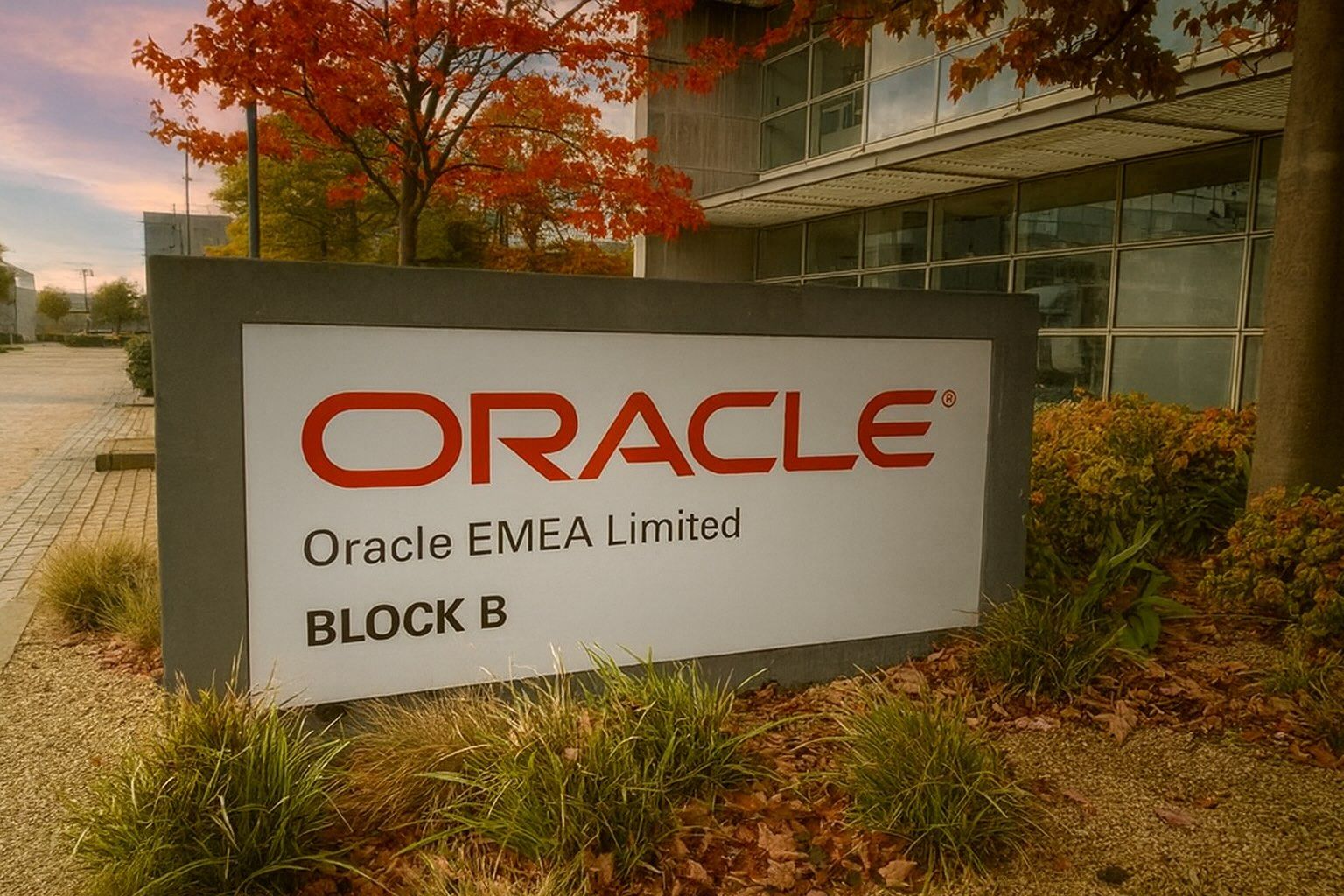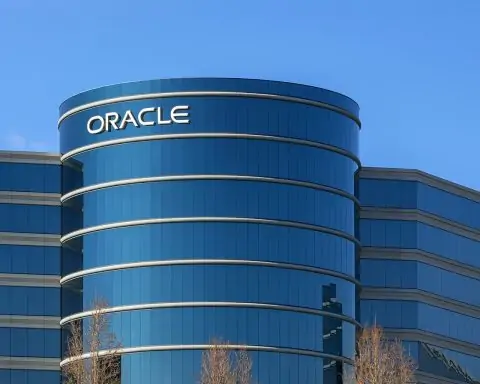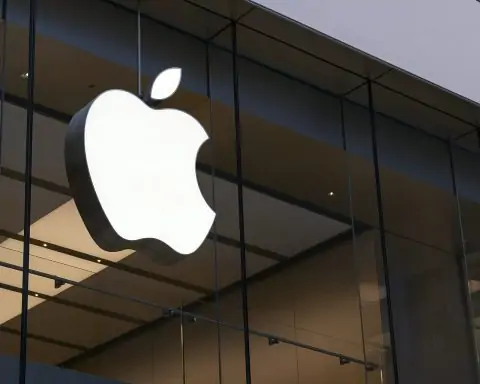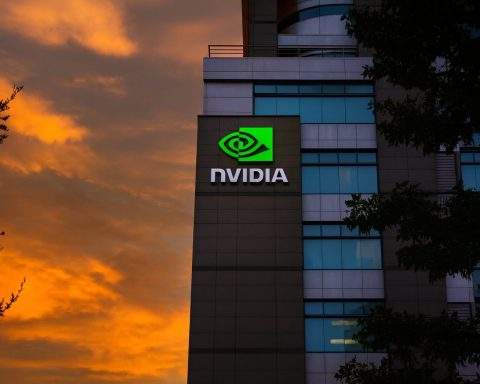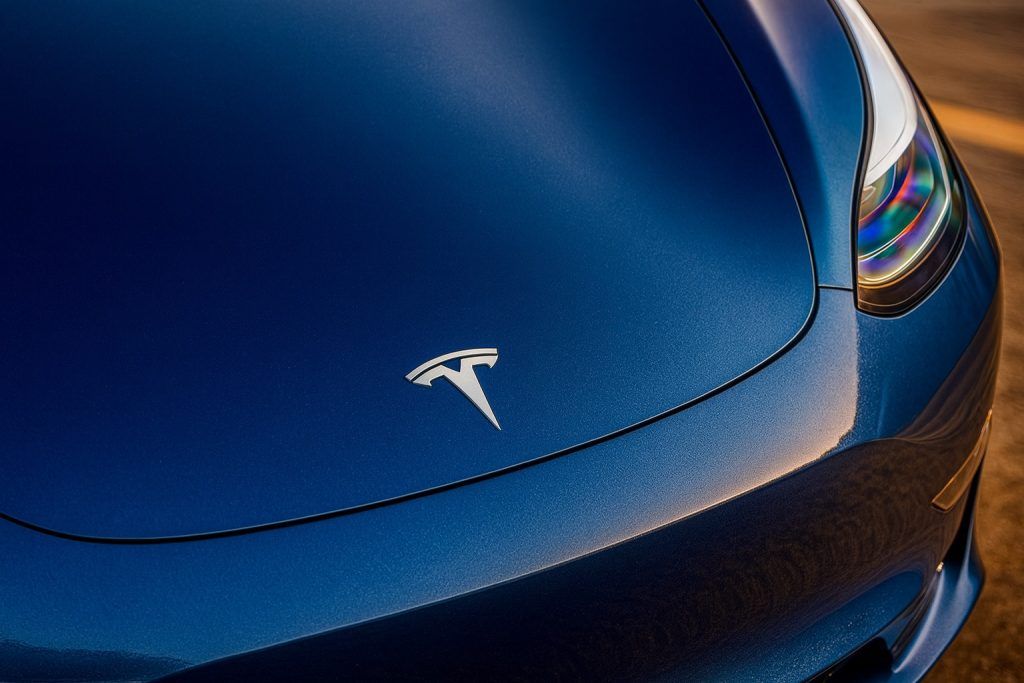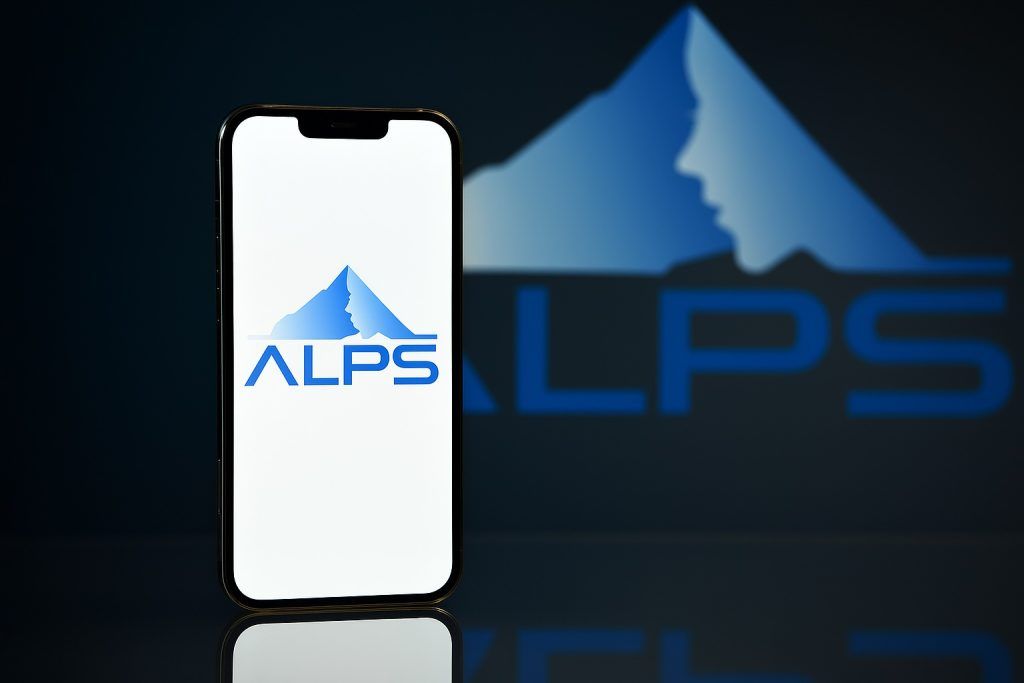- Current Price (Nov 1, 2025): ORCL closed ~$262.6 on Oct 31, 2025 [1] (trading in the high-$200s Nov 1). The stock is up roughly 70–75% year-to-date, after hitting an all-time high (~$345) in Sept 2025 [2] [3].
- Recent Performance: Oracle’s shares rallied on AI/cloud excitement but pulled back slightly in late Oct (profit-taking). It still trades about 20% below its Sept peak but remains near multi-year highs [4] [5]. Technical charts show ORCL recently finding support near its 50-day moving average (~$274) [6].
- Financial Results: In Q1 FY2026 (quarter ended Aug. 31), Oracle reported revenue $14.93 B (+12% YoY) and cloud (SaaS+IaaS) sales $7.20 B (+28%) [7]. Non-GAAP EPS was $1.47 (missed consensus by $0.01). The company’s remaining performance obligations (cloud backlog) jumped to $455 B (up 359% YoY) [8]. Oracle also initiated a $0.50/share dividend (0.7% yield) [9]. Management calls the quarter “astonishing,” and expects OCI revenue to grow ~77% this fiscal year [10] [11]. CFO Dough Kehring told analysts Oracle now targets $225 B total revenue and $21 EPS by FY2030 – well above Wall Street forecasts [12] [13].
- AI/Cloud Deals: Oracle is at the center of massive AI infrastructure agreements. Reports (later confirmed) showed OpenAI committed to spend $300 B over 5 years on Oracle’s cloud (~$60 B/year) [14], vaulting ORCL’s backlog and fueling the rally. In one 30-day stretch last quarter, OCI signed $65 B in new bookings, including a $20 B contract with Meta [15] [16]. Oracle says these and other deals come from multiple large customers, “not just OpenAI” [17] [18]. On Oct 30, Reuters reported Oracle and OpenAI will build a new 1‑gigawatt AI data center in Michigan as part of their “Stargate” expansion (now 8 GW, $450 B total in US infrastructure) [19] [20].
- AI/Cloud Products: Oracle has aggressively built AI/cloud offerings. At its Oct AI World event, the company unveiled an AI Data Platform and generative AI assistants for its Fusion apps [21]. It is scaling its cloud infrastructure (“Zettascale”) to 800,000+ GPUs (plus 50,000 AMD GPUs) [22], joined NVIDIA/DOE on the largest US AI supercomputer [23], and struck partnerships to run Google’s Gemini models and IBM’s Watsonx on OCI. Multi-cloud tie-ups (OCI accessible on AWS/Azure, revenue from these up 16× in Q1 [24]) position Oracle as a potential “fourth hyperscaler” alongside AWS, Azure and Google [25].
- Market Position: In cloud infrastructure, AWS (30% share) and Microsoft Azure (20%) still dominate [26] [27]; Google Cloud is ~13% [28]. Oracle’s cloud share is only ~3% [29] [30]. Salesforce and others each have ~2% [31]. (Notably, Oracle’s cloud and enterprise growth rates (20–50%+) exceed the big players, but on a much smaller base [32] [33].) Oracle’s market cap (~$800 B) now rivals or exceeds peers, so high growth is expected.
- Analyst Ratings & Forecasts: Wall Street is broadly bullish on ORCL’s AI/cloud transformation. Many firms raised ORCL to Buy/Outperform in Oct 2025. The consensus 12-month price target is about $320–330 [34] [35] (median ~$355 [36]), implying upside from current levels. Top bulls like Jefferies and Citi have targets in the $360–410 range [37]. A few bears warn that Oracle’s valuation is rich (45–60× forward EPS [38]) and overly reliant on a few big deals. For example, Jim Cramer on CNBC quipped Oracle is “the only one I’m worried about,” noting its fate hinges on OpenAI’s success (Oracle expects $60 B/year from OpenAI) [39].
Oracle’s Current Stock and Performance
Oracle’s stock has been on a tear in 2025, nearly doubling from around $170 in Jan 2025 to record highs (~$345) in mid-September [40]. That rally put Oracle in the top 5 of U.S. companies by market cap (approaching $1 trillion) [41]. As of Oct 31, 2025 the share price is about $262–270, after a mild late-October pullback [42] [43]. Year-to-date the stock is up roughly 70–75% [44] [45], far outpacing the S&P 500 and even the “Magnificent Seven” tech giants. In mid-Oct, profit-taking trimmed the price by about 7% in a day, but ORCL remains in a clear uptrend [46] [47]. Technically, the stock recently held its 50-day moving average (~$274) after the pullback [48], suggesting support in this area. Long-term momentum is strong – even after corrections Oracle is dramatically higher YTD [49] [50].
Recent News and Analyst Commentary (Late Oct 2025)
CEO Statements: Oracle’s leadership has been bullish on AI demand. At a Saudi summit (Oct 28), CEO Mike Sicilia said he sees “real value in AI” and isn’t worried about an “AI bubble,” noting supply still lags demand [51]. This reassured investors who feared AI hype excess. Mid-October’s Oracle CloudWorld events showcased new AI initiatives (generative AI apps, an “Oracle AI Data Platform,” etc.) and confirmed Oracle’s multi-year vision [52]. Safra Catz and Clay Magouyrk briefed analysts (Oct 16) with aggressively upbeat guidance – projecting OCI cloud to $166B by FY2030 and total revenue $225B by then [53] [54]. Magouyrk stressed that in the last quarter OCI booked $65B from diverse customers (“seven deals, four customers” beyond OpenAI) [55]. CFO Kehring also told investors that AI infrastructure margins should be ~30–40% [56] [57] – much higher than some feared, easing margin concerns.
Big AI Deals: Reuters and others reported on Oracle’s AI contracts. In particular, Oracle and OpenAI announced construction of a new 1‑gigawatt AI “Stargate” data center in Michigan [58], part of their $500+ B infrastructure plan. Coverage of these mega-deals (OpenAI’s $300 B/5-year pledge, Meta’s $20 B deal) underpins the share surge. Hedge fund and analyst research (cited on Yahoo Finance) highlights the scale – one note called Oracle’s recent quarter “truly historic” and even an “NVIDIA moment” for cloud [59] [60].
Analyst Quotes: Financial media has been peppered with Oracle commentary. Bulls emphasize the unique AI contracts: one Jefferies analyst called the AI-fueled quarter “truly historic” [61]. Conversely, skeptics cite risks. Jim Cramer (CNBC) warned that “no one needs [OpenAI] to be good… like Oracle does,” dubbing ORCL “the only one I’m worried about” due to its massive OpenAI exposure [62]. Cerity Partners’ Jim Lebenthal publicly debunked reports of collapsing cloud margins as “unsubstantiated” rumor, reflecting skepticism about sustainability [63]. In sum, pundits are intrigued but divided – Oracle is seen as a top AI bet, but execution must justify its lofty profile.
Financial Performance and Outlook
Oracle’s latest results underscore its cloud transition. Q1 FY2026 (reported Sept 9, 2025) revenue rose 12% YoY to $14.93 B [64]. Cloud (IaaS+SaaS) revenue grew 28% to $7.2 B [65], with strong growth in both infrastructure and applications. Non-GAAP EPS was $1.47 (vs. $1.48 expected) [66]. Crucially, Remaining Performance Obligations (contracted future sales) hit $455 B (up 359%), reflecting the enormous AI contract backlog [67].
Post-quarter guidance was even more bullish. Oracle said OCI bookings will reach $18 B this fiscal year (+77%) [68] and projected OCI revenue of $166 B by FY2030 (about 75% of total sales) [69] [70]. By FY2030, Oracle expects $225 B in total revenue and $21 EPS [71] [72] – well above current analyst estimates. Wall Street consensus for 2030 had been only ~$198 B and $18.9 EPS [73], so management’s targets are highly optimistic. In response, ORCL shares popped ~3% (Intraday, Oct 16) [74].
Oracle also emphasized profitability: it projects 30–40% gross margins on its AI infrastructure business [75] (vs. ~69% overall today). This helped dispel fears that building all those AI data centers would crush profits. On the earnings call, Magouyrk noted that all $65B of new bookings were “from a range of customers, not just OpenAI” [76]. CEO Safra Catz called Q1 results “astonishing” and highlighted that Oracle will double-triple its capital spending on data centers to meet AI demand. (In fact, reports say Oracle tripled annual capex in 2025 to build GPU-equipped facilities.)
AI, Cloud and Enterprise Software Developments
Oracle has leveraged its legacy strengths (database, enterprise apps) into AI offerings. In late October it announced an “Oracle AI Database” enabling customers to run leading AI models directly on Oracle data. Its Fusion Cloud applications (ERP, HCM, etc.) now include generative AI assistants to “fast-track AI adoption” [77]. The company unveiled an “Oracle AI Data Platform” to connect enterprise data to AI models across the business [78]. Partnerships further extend its AI portfolio: IBM is building AI agents on OCI, and Zoom recently agreed to use Oracle’s cloud services for its collaboration tools [79] [80].
On the infrastructure side, Oracle is assembling a massive AI supercomputing network. It announced plans for an “OCI Zettascale” grid of 800,000 Nvidia GPUs and added 50,000 AMD GPUs by 2026 [81]. This week Oracle joined NVIDIA and the U.S. Dept. of Energy to build the DOE’s largest AI supercomputer [82]. These investments aim to match the computing scale of AWS and Azure for large language models. Oracle’s multi-cloud strategy is also notable: it will host Google’s Gemini AI on OCI and integrate IBM’s Watsonx AI platform into its cloud [83]. It has deals with AWS, Microsoft and Google to let their customers run OCI alongside native services; revenue from these multi-cloud partnerships jumped over 16× year-over-year in Q1 [84]. Such moves have analysts calling Oracle a potential “fourth hyperscaler” in cloud computing [85].
Competitive Landscape: AWS, Azure, Salesforce, etc.
The cloud infrastructure market remains led by the “big three.” Synergy Research data (via CRN) show AWS at ~30% global share (Q2 2025), Microsoft Azure ~20%, Google Cloud ~13% [86] [87]. Oracle’s share is tiny – around 3% [88] [89] – roughly equal to Alibaba’s 4% and above Salesforce’s ~2% [90]. (Note: Salesforce is primarily a SaaS/CRM company, so its “cloud market share” refers to infrastructure services only.) Even with small share, Oracle’s cloud growth rates are stellar (20–50% YoY) [91].
For context, in Oct 2025 Amazon reported AWS Q3 (Oct 2025 quarter) revenue +~20% YoY (~$33B) [92], while Microsoft said Azure grew +40% in its fiscal Q1 (July–Sept) [93]. Amazon’s CEO Andy Jassy noted AWS is now “growing at a pace we haven’t seen since 2022” due to AI demand [94]. Analysts praised Amazon’s results as one of the strongest of the season [95]. Microsoft is spending heavily on AI servers ($35B capex in Q1 [96]) to meet Azure demand. In enterprise software, competitors like Salesforce and SAP are also embedding AI. Salesforce, for example, expects to exceed $60 B in annual revenue by 2030 thanks to new AI-driven services [97]. However, Salesforce’s stock has underperformed this year (down ~29%) even as it announced large AI investments.
Valuation-wise, ORCL trades near 30–45× forward earnings (estimates vary), roughly in line with or above big peers. Reuters noted in Sept 2025 that Oracle was at ~33× forward EPS, versus ~32× for Amazon and ~31× for Microsoft [98]. TradingNEWS analysis (Oct 31) put ORCL’s forward P/E at ~44× (compared to Salesforce’s ~21×) [99]. In short, Oracle commands high multiples like a fast-growth tech name, reflecting investor expectations for its AI expansion.
Analyst Forecasts and Outlook
Most analysts remain positive on ORCL, forecasting further upside if execution continues. Surveys show mostly “Buy” ratings: out of major brokerage reports many cite moderate Upside (consensus target $320–330) [100] [101]. The median 1-year price target is around $324 [102]. Many top analysts raised targets: Jefferies and ScotiaBank issued $360–$370 targets, Citi $410 [103]. By contrast, skeptics like Redburn labeled it very risky and set just $175 [104]. Thus price targets span a wide range ($175–$410) depending on bullishness about AI demand.
For the longer term, Oracle itself gave guidance: aiming $225 B revenue by FY2030 [105]. If achieved, that would dwarf current sales (~$60 B) and imply ~20–25% CAGR. (For comparison, Salesforce’s outlook is ~$60 B by 2030 [106]). Of course, delivering such growth requires the huge AI cloud contracts to materialize as revenue. Investors will watch Oracle’s execution closely in 2026. If Oracle can convert even a fraction of its $455 B backlog into sales, analysts believe ORCL could climb further. But any sign of execution trouble or cuts in spending could trigger sharp sell-offs given the stock’s lofty valuation.
In sum, Oracle’s late-2025 story is one of AI-driven optimism vs. healthy skepticism. The company has arguably become the most prominent “AI cloud” stock after Nvidia, and its technology and deal flow are world-class. Yet its fortunes are now tightly tied to the success of a few huge AI customers. As Jim Cramer put it, Oracle may be the favorite “to be the next trillion-dollar tech giant,” but “no one needs [OpenAI] to be good… like Oracle does” [107]. Investors today must balance the excitement around AI partnerships (which have already sent ORCL surging) with the risk that those mega-deals take years to fully pay off.
Sources: Oracle official filings and investor slides [108] [109]; Reuters news (sales forecasts, earnings and AI developments) [110] [111] [112] [113] [114] [115]; tech financial media including TechStock² analysis [116] [117] [118]; CRN cloud market data [119] [120]; MarketBeat/Yahoo Finance expert commentary [121] [122] [123] [124].
References
1. www.marketbeat.com, 2. ts2.tech, 3. ts2.tech, 4. ts2.tech, 5. ts2.tech, 6. ts2.tech, 7. ts2.tech, 8. ts2.tech, 9. ts2.tech, 10. ts2.tech, 11. ts2.tech, 12. www.reuters.com, 13. techchannel.news, 14. ts2.tech, 15. www.reuters.com, 16. ts2.tech, 17. www.reuters.com, 18. ts2.tech, 19. www.reuters.com, 20. www.reuters.com, 21. ts2.tech, 22. ts2.tech, 23. ts2.tech, 24. www.reuters.com, 25. ts2.tech, 26. www.crn.com, 27. www.crn.com, 28. www.crn.com, 29. ts2.tech, 30. www.crn.com, 31. www.crn.com, 32. ts2.tech, 33. ts2.tech, 34. ts2.tech, 35. ts2.tech, 36. ts2.tech, 37. ts2.tech, 38. ts2.tech, 39. ts2.tech, 40. ts2.tech, 41. ts2.tech, 42. www.marketbeat.com, 43. ts2.tech, 44. ts2.tech, 45. ts2.tech, 46. ts2.tech, 47. ts2.tech, 48. ts2.tech, 49. ts2.tech, 50. ts2.tech, 51. www.reuters.com, 52. ts2.tech, 53. www.reuters.com, 54. techchannel.news, 55. www.reuters.com, 56. www.reuters.com, 57. techchannel.news, 58. www.reuters.com, 59. ts2.tech, 60. ts2.tech, 61. ts2.tech, 62. ts2.tech, 63. ts2.tech, 64. ts2.tech, 65. ts2.tech, 66. ts2.tech, 67. ts2.tech, 68. ts2.tech, 69. www.reuters.com, 70. techchannel.news, 71. www.reuters.com, 72. techchannel.news, 73. www.reuters.com, 74. www.reuters.com, 75. www.reuters.com, 76. www.reuters.com, 77. ts2.tech, 78. ts2.tech, 79. ts2.tech, 80. ts2.tech, 81. ts2.tech, 82. ts2.tech, 83. ts2.tech, 84. www.reuters.com, 85. ts2.tech, 86. www.crn.com, 87. www.crn.com, 88. ts2.tech, 89. www.crn.com, 90. www.crn.com, 91. ts2.tech, 92. www.reuters.com, 93. www.reuters.com, 94. www.reuters.com, 95. www.reuters.com, 96. www.reuters.com, 97. www.reuters.com, 98. www.reuters.com, 99. www.tradingnews.com, 100. ts2.tech, 101. ts2.tech, 102. ts2.tech, 103. ts2.tech, 104. ts2.tech, 105. techchannel.news, 106. www.reuters.com, 107. ts2.tech, 108. ts2.tech, 109. www.reuters.com, 110. www.reuters.com, 111. www.reuters.com, 112. www.reuters.com, 113. www.reuters.com, 114. www.reuters.com, 115. www.reuters.com, 116. ts2.tech, 117. ts2.tech, 118. ts2.tech, 119. www.crn.com, 120. www.crn.com, 121. www.marketbeat.com, 122. ts2.tech, 123. ts2.tech, 124. ts2.tech
